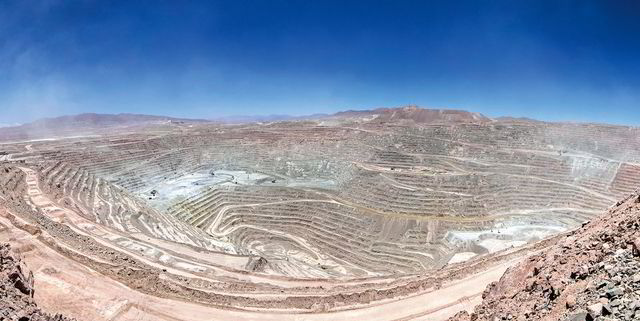Progress on the world’s rising climate action ambitions could be undermined by a shortage of some of the critical minerals used in clean-energy technologies including wind turbines, solar farms and electric vehicles (EVs), unless governments act now to head-off a “looming mismatch” in supply and demand, according to a far-reaching report from the International Energy Agency (IEA).
The special report, which trained a spotlight on the “central importance” of minerals such as copper, lithium, nickel, cobalt and rare-earths in a “secure and rapid transformation of the global energy sector”, found that while the “challenges are not insurmountable, governments must give clear signals about how they plan to turn their climate pledges into action” to avoid future market pinchpoints.
“Today, the data shows a looming mismatch between the world’s strengthened climate ambitions and the availability of critical minerals that are essential to realising those ambitions,” said IEA executive director Fatih Birol, in a statement in advance of the launch of The Role of Critical Minerals in Clean Energy Transitions.
“By acting now and acting together, [international governments] can significantly reduce the risks of price volatility and supply disruptions.
“Left unaddressed, these potential vulnerabilities could make global progress towards a clean-energy future slower and more costly – and therefore hamper international efforts to tackle climate change.”
Demand outlooks and supply vulnerabilities “vary widely” by mineral, but the energy sector’s overall appetite for critical minerals could grow six-fold by 2040, according to the IEA, “depending on how rapidly governments act to reduce emissions”.
“Not only is this a massive increase in absolute terms, but as the costs of technologies fall, mineral inputs will account for an increasingly important part of the value of key components, making their overall costs more vulnerable to potential mineral price swings,” said Birol.
He added: “This is what energy security looks like in the 21st century”, adding the IEA was “fully committed” to helping governments make sure “these hazards don’t derail the global drive to accelerate energy transitions”.
The report, part of the IEA’s World Energy Outlook series, stressed that the mineral demands of a renewables-power energy would “differ profoundly” from one run on fossil fuels, noting that an onshore wind plant needs “nine times more mineral resources than a similarly sized gas-fired power plant”, while EVs requires six times the quantities of minerals used in internal combustion engine-driven car.
The commercial importance of critical minerals is forecast to grow in line with booming demand, with the IEA pointing to the fact that revenue from coal production is currently ten times larger than from energy transition minerals, but that “in ‘climate-driven’ scenarios, these positions are reversed well before 2040”.
In climate-driven scenarios, mineral demand for use in batteries for EVs and grid storage is a “major force”, according to the IEA report, growing “at least thirty times” by the end of the next decade, while the rise of low-carbon power generation will also result in a a tripling of mineral demand from this sector by this date.
Wind is expected to “take the lead, bolstered by material-intensive offshore [projects]”, followed by PV, and then the demand for copper and aluminium that will come with the expected expansion of electricity networks around the world.
The report highlights a range of key areas of action by policy makers to ensure that critical minerals “enable an accelerated transition to clean-energy rather than becoming a bottleneck”. The IEA’s recommendations include that governments:
• must make long-term commitments for emission reductions – “which would provide the confidence needed for suppliers to invest in and expand mineral production”;
• promote technological advances;
• scale up recycling to relieve pressure on primary supplies;
• maintain high environmental and social standards; and
• strengthen international collaboration between producers and consumers.
Unlike crude oil – a commodity produced around the world and traded in liquid markets – mining and processing of minerals such as lithium, cobalt and some rare earth elements are highly concentrated in a small number of countries, with the three largest accounting for more than 75% of global supplies.

 Iran Energy News Oil, Gas, Petrochemical and Energy Field Specialized Channel
Iran Energy News Oil, Gas, Petrochemical and Energy Field Specialized Channel



